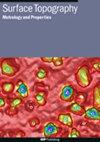可变光照下基于对抗域适应的磨削表面粗糙度等级识别
IF 2
3区 材料科学
Q2 ENGINEERING, MECHANICAL
引用次数: 0
摘要
深度学习可以实现磨削表面特征的自提取,从而实现端到端的粗糙度测量。尽管如此,由于磨削表面纹理具有随机性,特征较弱,不同光照环境下同一表面自提取的磨削表面特征不同,且训练数据与测试数据光照环境不一致时的识别测量精度较低。针对这些问题,本文提出了一种基于对抗域自适应(NMDANN)的可变光照下磨削表面粗糙度视觉测量方法。该方法使用改进的残差网络作为生成器,以提取更有效的可变特征,并将多头注意力引入域判别器,以增强其域自适应能力。实验结果表明,该方法可以识别光照环境变化下磨削表面的不同粗糙度等级,为在线可视化测量光照环境变化下的磨削表面粗糙度奠定了基础。本文章由计算机程序翻译,如有差异,请以英文原文为准。
Recognition of grinding surface roughness grade based on adversarial domain adaptation under variable illumination
Deep learning can realize the self-extraction of grinding surface features so that end-to-end roughness measurement can be realized. Still, due to the grinding surface texture being random, the features are weak, the self-extracted grinding surface features of the same surface under different lighting environments are different, and the training data and the test data when the lighting environments are inconsistent with the recognition of the measurement of the accuracy of the lower. To address these issues, this paper proposes an adversarial domain self-adaptation (NMDANN) based visual measurement method for grinding surface roughness under variable illumination. An improved residual network is used as a generator to extract more effective metastable features, and multi-head attention is introduced into the domain discriminator to enhance its domain adaptive capability. The experimental results show that the method can recognize different grades of roughness on the grinding surface under changing light environments, laying the foundation for online visual measurement of grinding surface roughness under variable light environments.
求助全文
通过发布文献求助,成功后即可免费获取论文全文。
去求助
来源期刊

Surface Topography: Metrology and Properties
Materials Science-Materials Chemistry
CiteScore
4.10
自引率
22.20%
发文量
183
期刊介绍:
An international forum for academics, industrialists and engineers to publish the latest research in surface topography measurement and characterisation, instrumentation development and the properties of surfaces.
 求助内容:
求助内容: 应助结果提醒方式:
应助结果提醒方式:


